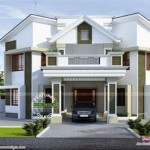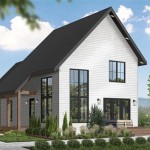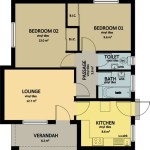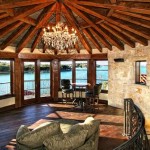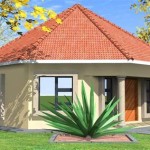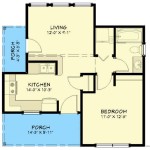New Model House Plans in Village Settings
The landscape of village living is evolving, and with it, the demand for modern and functional house plans that complement the rural environment. New model house plans for village settings are emerging as a response to the growing desire for contemporary amenities, sustainable building practices, and designs that harmonize with the natural surroundings. These plans represent a shift from traditional village house designs, integrating innovative architectural concepts with the practicality required for rural life.
Historically, village house designs were characterized by simplicity, often utilizing locally sourced materials and reflecting the community's cultural heritage. However, the contemporary resident seeks a blend of tradition and modernity, incorporating energy-efficient technologies, adaptable living spaces, and designs that maximize natural light and ventilation. The new model house plans address these needs while respecting the unique characteristics of village life.
Key Considerations in New Model House Plans
Designing a new house plan for a village environment requires careful consideration of several crucial factors. These factors ensure the resulting house is not only aesthetically pleasing but also functional, sustainable, and integrated within the existing community fabric.
Material Selection: The choice of building materials is paramount. New model house plans prioritize locally sourced and sustainable materials. This approach reduces transportation costs and carbon footprint, supports the local economy, and ensures the house blends seamlessly with the surrounding environment. Materials like bamboo, wood, stone, and clay are often favored for their natural aesthetic and thermal properties. Modern interpretations also incorporate eco-friendly alternatives to traditional materials, such as recycled plastics and composite lumber, without compromising durability or appearance.
Energy Efficiency: Energy efficiency is a central element of new model house plans. Designs incorporate passive solar heating and cooling strategies, maximizing natural light penetration while minimizing heat gain during the summer months. High-performance insulation, energy-efficient windows and doors, and the use of renewable energy sources like solar panels contribute to reduced energy consumption and lower utility bills. Water conservation measures, such as rainwater harvesting and greywater recycling systems, are also integrated to promote sustainable water usage.
Contextual Design: The design must be sensitive to the existing village context. This includes considering the local architectural style, building regulations, and the surrounding landscape. New model house plans avoid imposing a jarring architectural style that clashes with the existing character of the village. Instead, they draw inspiration from traditional designs, incorporating familiar elements while introducing modern enhancements. The orientation of the house, its scale, and its relationship to neighboring structures are carefully considered to ensure harmony and integration.
Features of Contemporary Village House Plans
Contemporary village house plans often incorporate features that cater to the needs and aspirations of modern living, while remaining sensitive to the rural context. These features enhance comfort, functionality, and sustainability.
Open-Plan Living Spaces: Open-plan living areas are a common feature, promoting a sense of spaciousness and facilitating social interaction. These spaces combine the functions of living, dining, and kitchen areas into a single, unified zone. This design approach maximizes natural light penetration and creates a more flexible and adaptable living environment. Large windows and doors connect the interior spaces with the surrounding landscape, blurring the boundaries between indoors and outdoors.
Multi-Functional Spaces: The design of multi-functional spaces is crucial in optimizing the use of available area. Rooms can be designed to serve multiple purposes, such as a guest room that can be converted into a home office or a living room that can be transformed into a recreational space. This adaptability is particularly important in smaller village houses where space is limited. Built-in storage solutions and modular furniture contribute to the efficient use of space and the creation of a clutter-free environment.
Outdoor Living Areas: Outdoor living areas, such as verandas, patios, and courtyards, are seamlessly integrated into the design. These spaces provide opportunities for relaxation, entertainment, and connection with nature. They extend the living area beyond the confines of the house, fostering a sense of openness and connection with the surrounding landscape. Outdoor cooking facilities, gardens, and seating areas enhance the functionality and enjoyment of these spaces.
Sustainability in New Village House Designs
Sustainability is an overarching principle guiding the development of new village house plans. The integration of sustainable building practices not only reduces environmental impact but also enhances the long-term affordability and resilience of the house.
Passive Design Strategies: Passive design strategies are employed to minimize the need for active heating and cooling systems. These strategies include optimizing building orientation to maximize solar gain in winter and minimize it in summer, using natural ventilation to cool the house, and incorporating shading devices to reduce heat gain. Thermal mass materials, such as concrete or brick, are used to store heat during the day and release it at night, moderating indoor temperatures.
Water Conservation: Water conservation is a critical aspect of sustainable design in village settings. Rainwater harvesting systems collect rainwater from the roof and store it in tanks for later use in irrigation, toilet flushing, and other non-potable applications. Greywater recycling systems treat wastewater from showers, sinks, and washing machines for reuse in irrigation. Efficient plumbing fixtures, such as low-flow toilets and showerheads, further reduce water consumption.
Waste Management: Waste management strategies are incorporated to minimize waste generation and promote recycling. On-site composting systems convert organic waste into nutrient-rich soil for use in gardens. Designated recycling areas are provided for sorting and storing recyclable materials. The use of durable and long-lasting materials reduces the need for frequent replacements and minimizes waste.
Integrating Technology in Village Homes
While maintaining a connection to the natural environment, new model house plans also incorporate modern technologies to enhance comfort, convenience, and security.
Smart Home Systems: Smart home systems automate various functions, such as lighting, heating, cooling, and security. These systems can be controlled remotely using smartphones or tablets, allowing residents to manage their homes from anywhere. Smart thermostats optimize energy consumption by automatically adjusting temperatures based on occupancy and weather conditions. Smart lighting systems adjust light levels based on ambient light and occupancy, further reducing energy consumption.
Renewable Energy Integration: Solar panels are integrated into the roof design to generate electricity from sunlight. The electricity generated can be used to power the house or fed back into the grid, reducing reliance on fossil fuels. Battery storage systems store excess electricity for use during periods of low sunlight or power outages. Wind turbines can also be used to generate electricity in areas with favorable wind conditions.
Enhanced Security Systems: Enhanced security systems provide peace of mind and protect residents from potential threats. These systems include security cameras, motion sensors, and alarm systems that can be monitored remotely. Smart locks allow residents to control access to their homes using smartphones or keypads. Remote monitoring services provide 24/7 surveillance and emergency response.
Addressing Challenges in Village House Construction
Constructing new model houses in village settings often presents unique challenges that require careful planning and execution.
Accessibility: Accessibility to construction sites can be limited in some village areas, making it difficult to transport materials and equipment. Careful planning is required to ensure that materials can be delivered efficiently and safely. The use of smaller vehicles and manual labor may be necessary in some cases.
Skilled Labor: Skilled labor may be scarce in some village areas, requiring contractors to bring in workers from outside the community. This can increase construction costs and potentially disrupt local communities. Training local residents in construction skills can help address this challenge and create employment opportunities.
Permitting and Regulations: Navigating permitting and regulatory processes can be complex and time-consuming in some village areas. It is important to work closely with local authorities to ensure that all necessary permits are obtained and that the construction project complies with all applicable regulations.
Cost Management: Managing construction costs is essential to ensuring that new model houses are affordable for village residents. Careful budgeting, efficient material selection, and effective project management are crucial to controlling costs. Exploring alternative construction methods, such as prefabricated construction, can also help reduce costs and construction time.
New model house plans in village settings represent a significant advancement in rural housing design. By integrating modern amenities, sustainable building practices, and technology, these plans offer a pathway to comfortable, affordable, and environmentally responsible living in village environments. As demand for rural living continues to grow, the development and adoption of these innovative house plans will play a vital role in shaping the future of village communities.

Top 20 Village House Design I Home Idea Great For Build N Style

30x60 House Plan 1800 Sq Ft Village Design 3 Bhk

2 Bedrooms Simple Village House Plans Beautiful Home Plan I Low Budget My H Small Design Exterior Front

Top 30 Simple Village House Design Picture

4 Bedroom Village House Design N Style Plan In 3d

Low Budget House Design For Village Beautiful Simple Home Plan

25 By 30 Village House Plan 3 Bedroom Design With Best Front Elevation

Simple Village House Plans With Auto Cad Drawings

10 𝐒𝐢𝐦𝐩𝐥𝐞 𝐇𝐨𝐮𝐬𝐞 𝐃𝐞𝐬𝐢𝐠𝐧𝐬 Simple Village House Design In

Simple Village House Design In Customized Designs By Professionals Imagination Shaper

